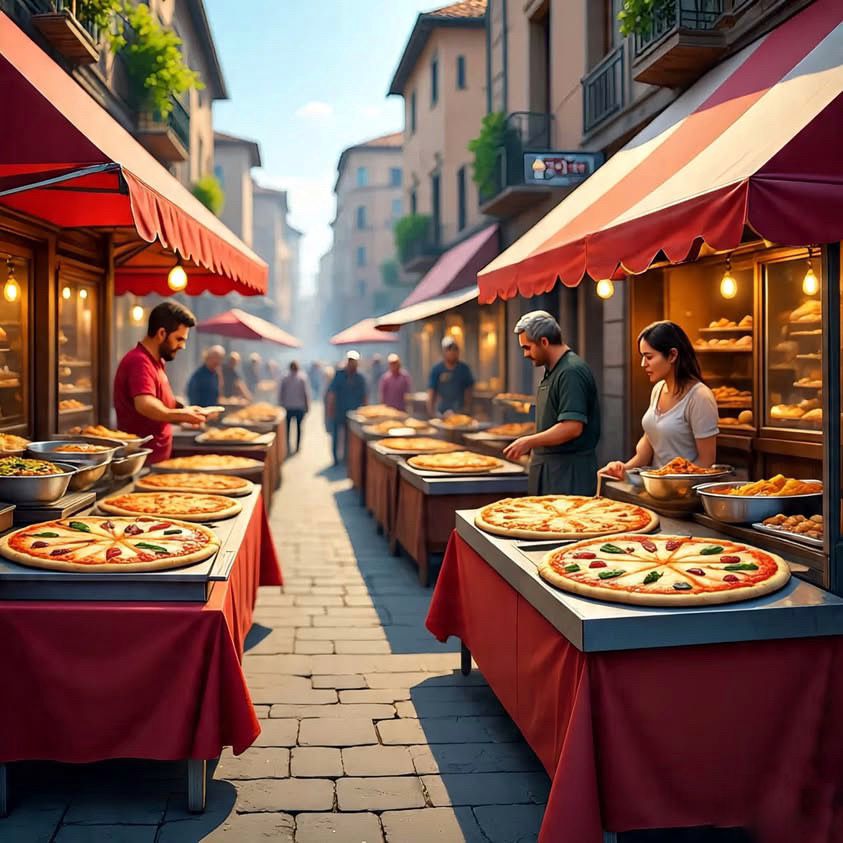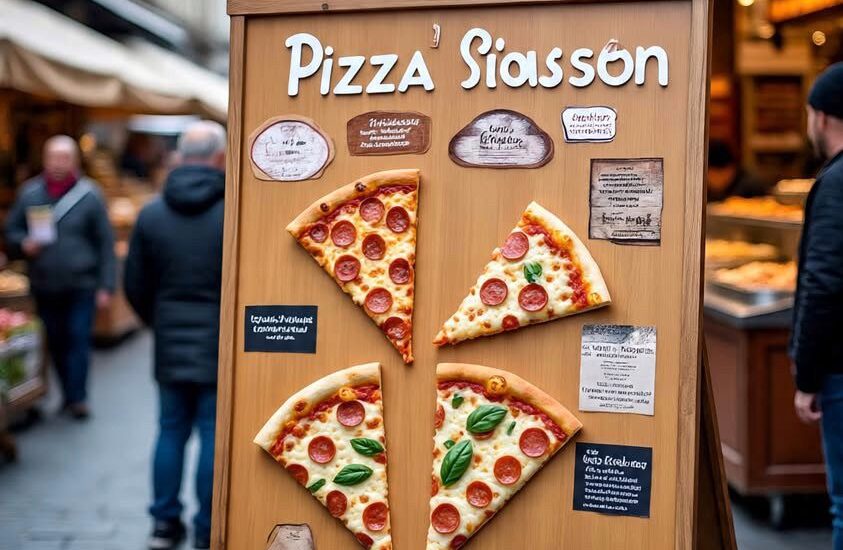When I think about street food culture and how it has shaped the way we eat today, pizza always comes to mind first. Not the fancy restaurant kind with truffle oil and prosciutto, but the real deal the kind you grab from a window, fold in half, and eat while walking down a crowded street. That version of pizza, the street food pizza, has a story that goes back further than most people realize. Explore the fascinating history of pizza’s role in shaping street food culture worldwide.
Walking through Naples a few years ago, I watched an elderly man selling pizza from a small cart near the port. He was doing what his grandfather probably did, and his grandfather before that. This scene made me understand that pizza was not born in restaurants. It started on the streets, made for working people who needed something cheap, filling, and fast. The history of pizza as street food is really the history of how ordinary people ate, survived, and created something that would eventually take over the world.
Back in the 18th century, Naples was crowded, chaotic, and full of poor workers who needed to eat on the go. Pizza became the perfect solution. Street vendors called pizzaioli would sell pizza from outdoor stalls or carry it through the streets in large boxes balanced on their heads. The early versions were simple just dough, tomatoes, oil, garlic, and maybe some cheese if you were lucky. Pizza marinara, one of the oldest styles, had no cheese at all. It was purely functional food, designed to give energy to people who could not afford to sit down for a meal or even own a proper kitchen.
What strikes me most about pizza’s role in street food history is how it democratized eating. Before pizza, street food existed in many forms across different cultures, but pizza had this unique ability to be both incredibly cheap and surprisingly satisfying. A slice of pizza could sustain a dock worker through an entire afternoon. It required no utensils, no plates, no sitting down. You could eat it with your hands while you worked, walked, or waited for your next job. This practicality made pizza an essential part of urban life in Naples.
The evolution of pizza from street food to global phenomenon happened gradually but inevitably. Italian immigrants brought pizza to America in the late 1800s and early 1900s, and guess where they sold it first? On the streets, of course. In New York, pushcart vendors sold pizza in Little Italy and other immigrant neighborhoods. These were not the New York-style pizzerias we know today. They were simple operations, often just a cart with a small oven, serving people who wanted a taste of home or just needed a quick, affordable meal.
I remember reading about how Lombardi’s, often credited as the first pizzeria in America, started in 1905. But even Lombardi’s began by selling pizza from a cart before opening a proper storefront. This transition from street cart to restaurant happened across many cities, but the street food origins never really disappeared. Even today, some of the best pizza you can find still comes from small windows, food trucks, or hole-in-the-wall spots where you order at a counter and eat standing up.
The street food nature of pizza influenced how it spread globally. When pizza traveled to different countries, it adapted to local tastes while maintaining that essential characteristic it had to be portable, shareable, and accessible. In Brazil, you find pizza sold from street stalls with local toppings. In Japan, pizza became part of their street food scene with uniquely Japanese flavors. Each culture took the basic concept and made it their own, but they kept the street food spirit alive.

Why did pizza succeed where other dishes struggled to gain global traction? Part of the answer lies in its street food DNA. Pizza never pretended to be fancy. It never required special knowledge or sophisticated tastes. Anyone could understand pizza immediately. You did not need to learn how to eat it or what to pair it with. This accessibility, born from its origins as food for the poor and working class, became its greatest strength.
Today, when food trucks serve gourmet pizza at music festivals or late-night pizza windows feed college students at two in the morning, they are continuing a tradition that started centuries ago in Naples. The context changes, but the fundamental role remains the same. Pizza still serves people who are hungry, on the move, and looking for something reliable and delicious.
Reference
Helstosky, C. (2008). Pizza: A global history. Reaktion Books.
Parasecoli, F. (2014). Food, identity, and cultural reproduction in immigrant communities. Social Research: An International Quarterly, 81(2), 415–439.
Montanari, M. (2006). Food is culture. Columbia University Press.

